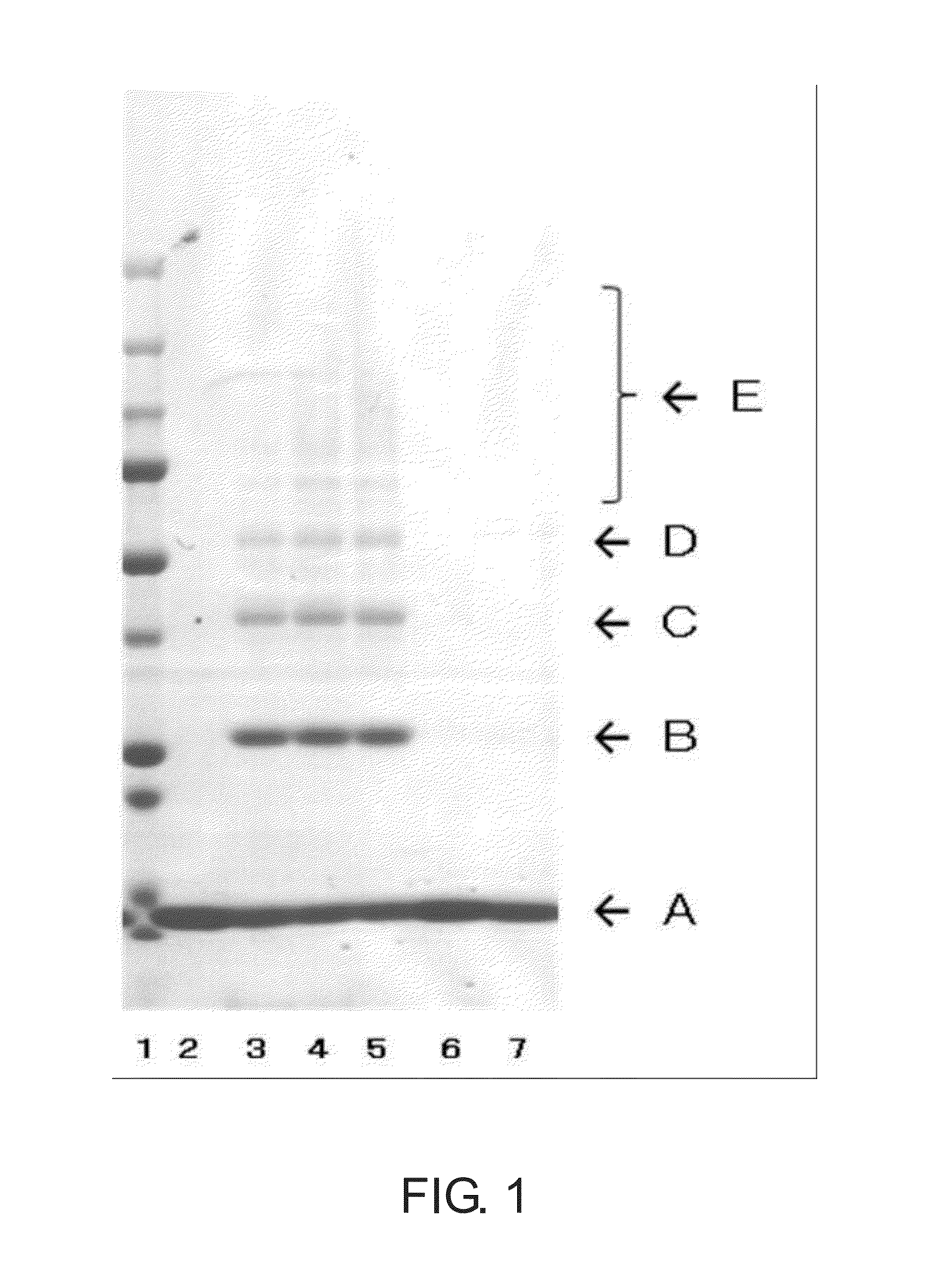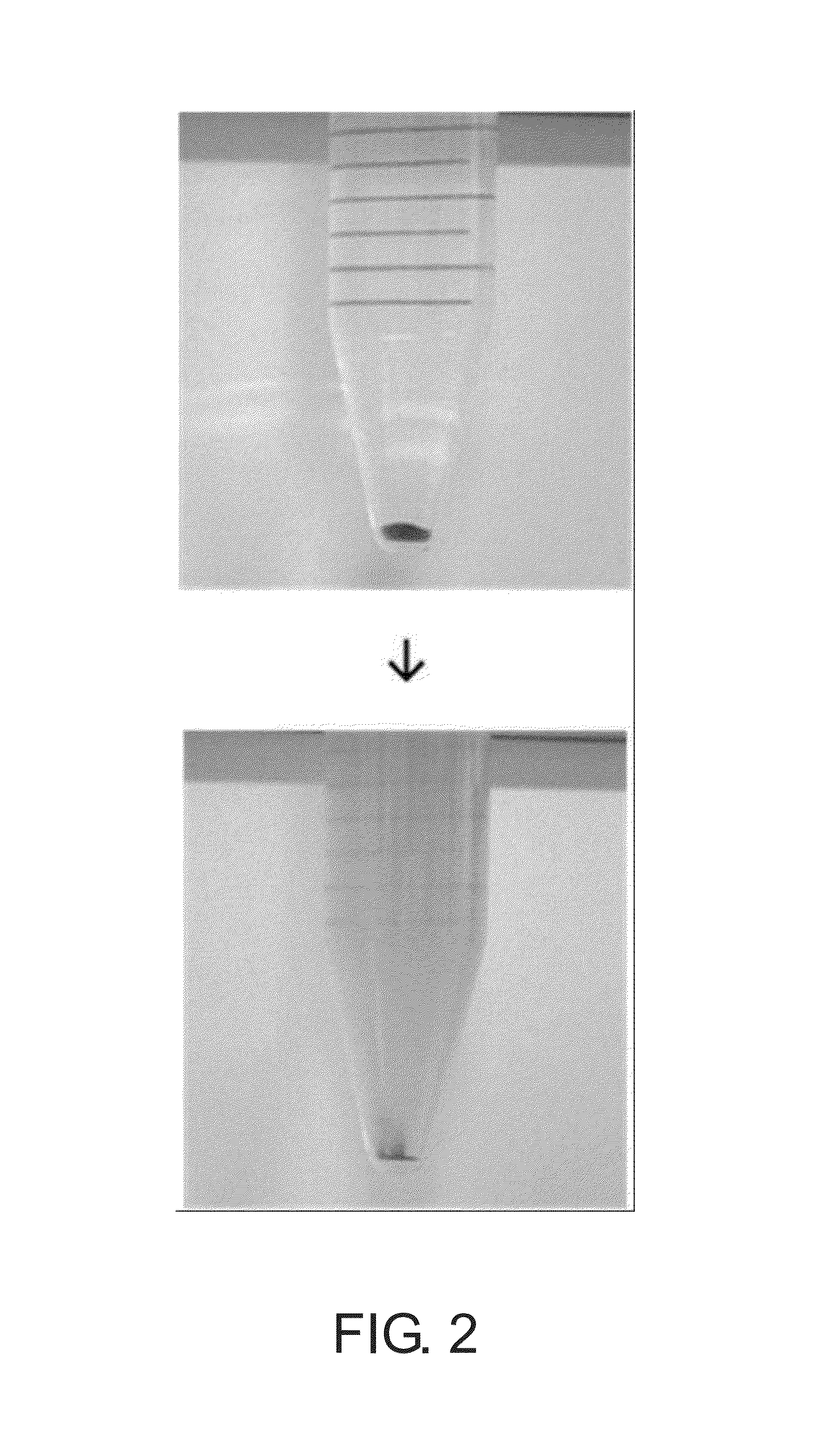Streptavidin-coupled magnetic particles and manufacturing method for same
a technology of magnetic particles and streptavidin, which is applied in the field of streptavidin-coupled magnetic particles, can solve the problems of high manufacturing cost, time and effort required for dispersing, and the amount of streptavidin that can be coupled onto the magnetic particles, and achieve the effect of high biotin-binding capacity
- Summary
- Abstract
- Description
- Claims
- Application Information
AI Technical Summary
Benefits of technology
Problems solved by technology
Method used
Image
Examples
example 1
(1) Manufacturing of Streptavidin-Coupled Magnetic Particles
[0151]Amino group-type Estapor magnetic particles EM2-100 / 40 (manufactured by Merck) were used for the magnetic particles. The magnetic particles are composed of a core shell structure and have a particle size of 1.62 μm, and they are particles in which the inner core contains a magnetic material which accounts for 41.2% of the total weight, and in which the shell portion comprising polystyrene is chemically modified to have 97 μeq / g of amino groups. 2 mg of the magnetic particles were collected, and 4 mL of a 10 mmol / L acetate buffer at pH5.5 containing 1.0% trimethylstearylammonium chloride (manufactured by Tokyo Chemical Industry Co., Ltd.) (hereinafter referred to as dispersion liquid A) was added for dispersion. Subsequently, the magnetic particles were collected by positioning a powerful magnet to the side of the container, and dispersion liquid A was removed by aspiration (hereinafter, the sequence of operations cons...
example 2
Analysis of Cross-Linked Structure of Streptavidin on the Magnetic Particles
[0159]Streptavidin-coupled magnetic particles having biotin-binding capacities of 2.61 pmol / mm2, 4.95 pmol / mm2, and 6.76 pmol / mm2, which were obtained by a method similar to the method of Example 1, were used. The respective streptavidin-coupled magnetic particles were washed ten times using 4 mL of PBS, and after substitution of PBS with 1% SDS / PBS, incubation was carried out at 60° C. for one hour. Next, the magnetic particles were collected using a magnet, and after collecting the supernatant protein solution, the supernatant was subjected to analysis by SDS-PAGE. A similar operation was carried out on commercially available streptavidin-coupled magnetic particles. The SDS-PAGE result is shown in FIG. 1.
[0160]As it is clear from FIG. 1, while only monomers constituting streptavidin were observed in streptavidin and commercially available streptavidin-coupled magnetic particles, bands of dimers, trimers, t...
PUM
| Property | Measurement | Unit |
|---|---|---|
| particle sizes | aaaaa | aaaaa |
| particle size | aaaaa | aaaaa |
| concentration | aaaaa | aaaaa |
Abstract
Description
Claims
Application Information
 Login to View More
Login to View More - R&D
- Intellectual Property
- Life Sciences
- Materials
- Tech Scout
- Unparalleled Data Quality
- Higher Quality Content
- 60% Fewer Hallucinations
Browse by: Latest US Patents, China's latest patents, Technical Efficacy Thesaurus, Application Domain, Technology Topic, Popular Technical Reports.
© 2025 PatSnap. All rights reserved.Legal|Privacy policy|Modern Slavery Act Transparency Statement|Sitemap|About US| Contact US: help@patsnap.com


